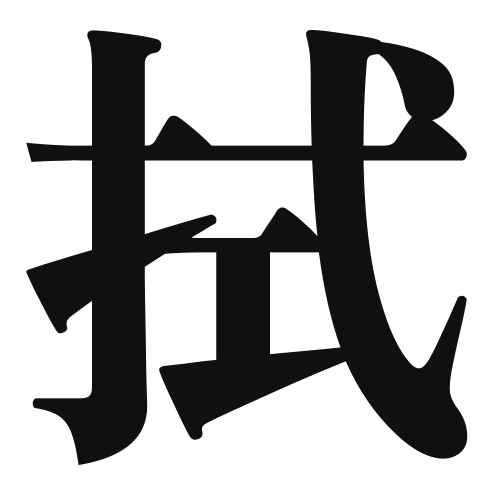1. Overview of Meaning
The kanji “拭” (shiku) means “to wipe” or “to clean.” It is commonly used in contexts where one is removing dirt or moisture from a surface.
2. Formation and Radical
Formation of the Kanji: The kanji “拭” is a compound character (会意文字) that combines the elements of “手” (hand) and “拭” (to wipe). The hand is used to perform the action of wiping.
Radical: The radical for “拭” is “手” (shou), which relates to actions performed by the hand.
3. Examples of Usage
Common Words and Phrases:
- 拭き取る (ふきとる, fukitoru) – to wipe off
- 拭き掃除 (ふきそうじ, fukisouji) – wiping cleaning
Example Sentences in Daily Conversation:
- テーブルを拭いてください。 (Please wipe the table.)
- 雨が降ったので、窓を拭く必要があります。 (Since it rained, I need to wipe the windows.)
4. Synonyms and Antonyms
Similar Kanji:
- 掃 (そう, sou) – to sweep; this refers more to cleaning by sweeping rather than wiping.
- 拭う (ぬぐう, nuguu) – to wipe; similar in meaning but can imply a more general action of removing something.
Antonyms:
- 汚す (よごす, yogosu) – to dirty; this is the opposite action of cleaning or wiping.
5. Cultural and Historical Background
Relation to Japanese Culture: The act of wiping is significant in Japanese culture, especially in practices like cleaning the home (掃除, souji) and maintaining cleanliness in public spaces.
Proverbs and Idioms:
- 「掃除は心の掃除」 (Cleaning is cleaning of the heart) – This proverb emphasizes the importance of cleanliness in both physical and mental spaces.
